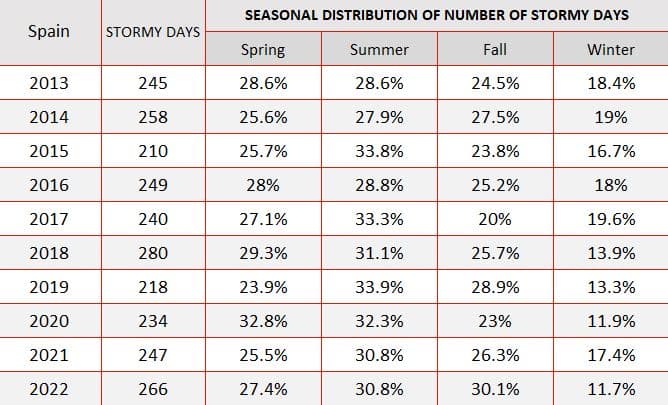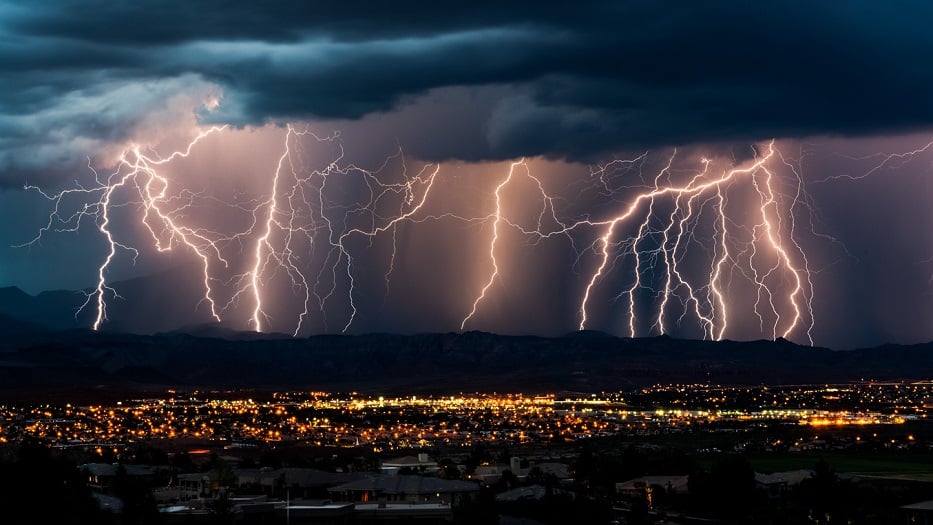Julia Maria Gomez de Avila Segade | 11/07/2023
There are few things more intimidating than a sky bursting into a storm, and the fear it instills is not groundless, as its effects can cause serious personal and infrastructure damage. We analyzed with an expert its impact and how to protect from it in industrial environments.
Anaïs Brocheriou, an expert in the implementation of solutions related to thunderstorms and lightning strikes at TESICNOR, gives us the keys to understanding the risks faced by industrial environments and the technologies that can prevent their impact or mitigate their consequences.
When we talk generally about the main damages caused by major storms, Brocheriou highlights five fronts:
- Risks of industrial accidents. In the wind energy sector, for example, wind turbine blades are very much affected by lightning strikes, as the strength of the materials is not always able to withstand the power of their impact.
- Integrity of people. Without being particularly frequent, we can give several examples. “The industrial accident that affected the whole of Spain was the case of the flour mill in Huesca in 2005, where a lightning strike caused a major explosion and five people died”, recalls the TESICNOR technician.
- Risk of explosion or structural damage. In North America, 16 out of 20 accidents involving oil storage tanks are caused by lightning. In a study conducted over 40 years and 242 accidents involving improper storage tanks, 74% occurred at petrochemical facilities and 80 cases were caused by lightning (33%).
- Direct effects. Breakage of materials, short circuits, and fires on structures.
- Economic losses. In most cases, these range from thousands to tens of thousands of euros.
Impact of storms in Spain
According to a report published by Météorage, 2022 was the second year with the most lightning strikes ever recorded in Spain since records began (more than 440,000 cloud-to-ground CG lightning strikes). The communities with the highest rate of lightning strikes were Aragón, Catalonia, and Valencia, followed by the Balearic Islands, La Rioja, and Navarre. Throughout the year, the storms were “particularly violent, as the lower layers overheated during frequent heat waves, which strengthened the thermal gradient in the atmospheric column and thus facilitated convection”, the report notes. Anaïs Brocheriou adds that “storms are occurring earlier: they used to cluster in summer, whereas now they start in March”.

TESICNOR explains that the most vulnerable sectors are those whose activity is performed in isolated structures outside the city, with metal protrusions at height and with risk of explosion. This would be the case for industries such as petrochemicals, Oil&Gas, and sensitive electrical processes (paper, glass, automotive, or agri-food).
The amount of damage sustained by this type of infrastructure each season is considerable, as is the economic cost. “From a few tens of euros (damage to small materials), to over one million euros in electrical claims, to hundreds of thousands of euros incurred when a factory ceases production”, says Brocheriou.
Technological advances and future challenges
When we asked the expert which defense technologies are most effective, she said that it is prevention services that complement direct protection. “The most effective technologies are those that can demonstrate the effectiveness of the system, as written in IEC standard 627793 (Lightning protection. Storm warning systems). To analyze the performance measured for each site, a study of the effectiveness of the alert for improper sites is conducted prior to the production of the service”.
For example, she tells us about the work of Météorage, a global specialist in lightning detection, which “has been providing alert services for 35 years thanks to a network of sensors installed throughout Western Europe, where flashes are detected in real time and characteristics such as time, geolocation, and intensity in kiloamperes are recorded. The alert service is based on the physical detection of a flash in the site surveillance zone: when the first flash enters the zone, an alert initiation message is automatically sent to establish safety procedures. An end-of-alert message is issued after a period of time long enough to coincide with the absence of storm activity in the area”, she says.
The alert and protection systems do not require the installation of sensors or maintenance, although lines of research are currently underway to overcome small gaps in the monitoring network. This is the case with the anticipation of severe phenomena through the analysis of Lightning Jump (storm cells). “For years now, the industrial sector has been facing an increase in the severity of storms, as shown by the works of the IPCC, and a broader seasonality of storms, which will likely extend throughout the year. Our challenge is to establish a more sensitive and less lenient, critical social conscience if it considers that there is negligence in the safety measures for both people and industrial areas”, she concludes.
Contributor to this article:
Anaïs Brocheriou, an expert in the implementation of solutions related to thunderstorms and lightning strikes at TESICNOR.





